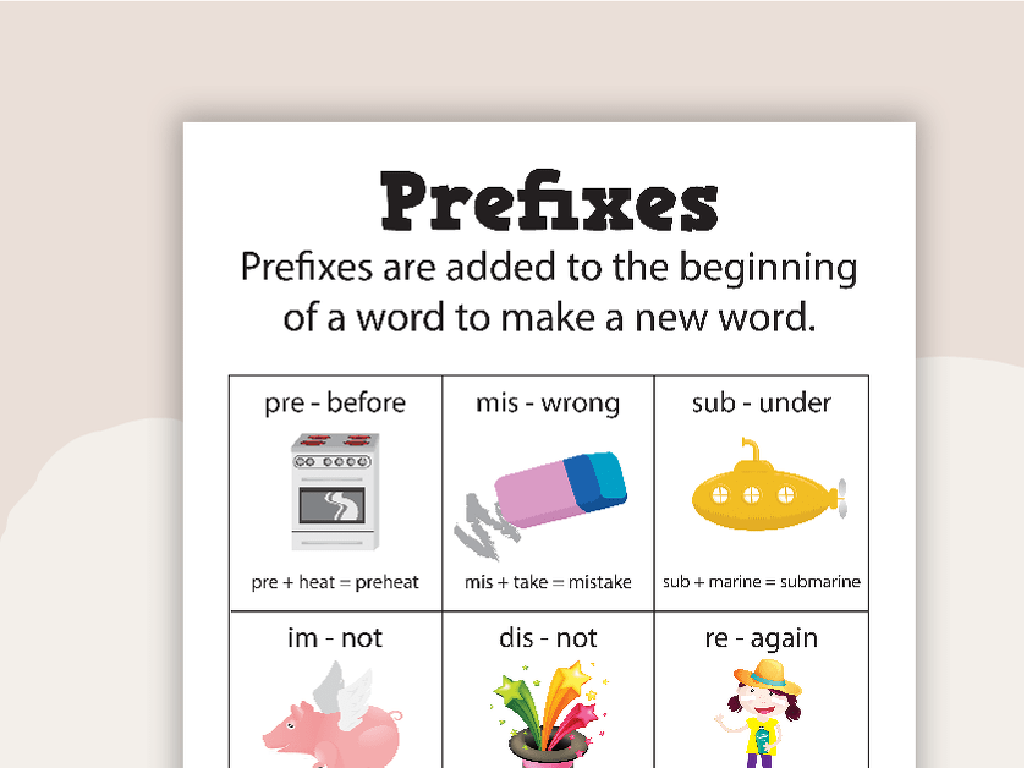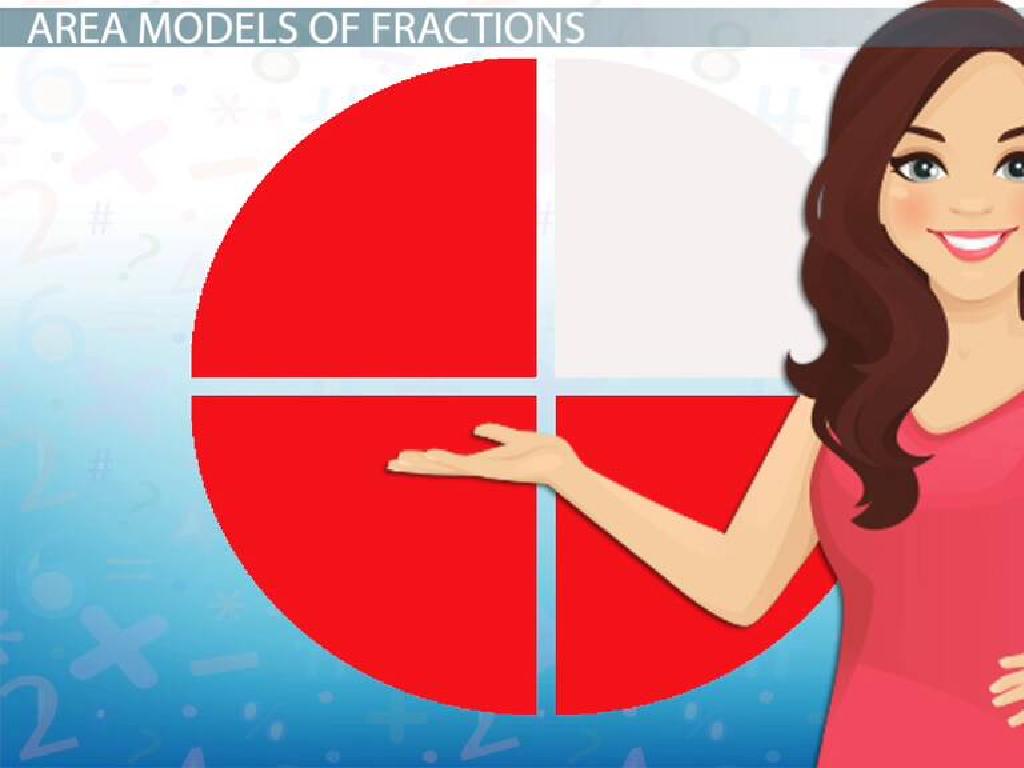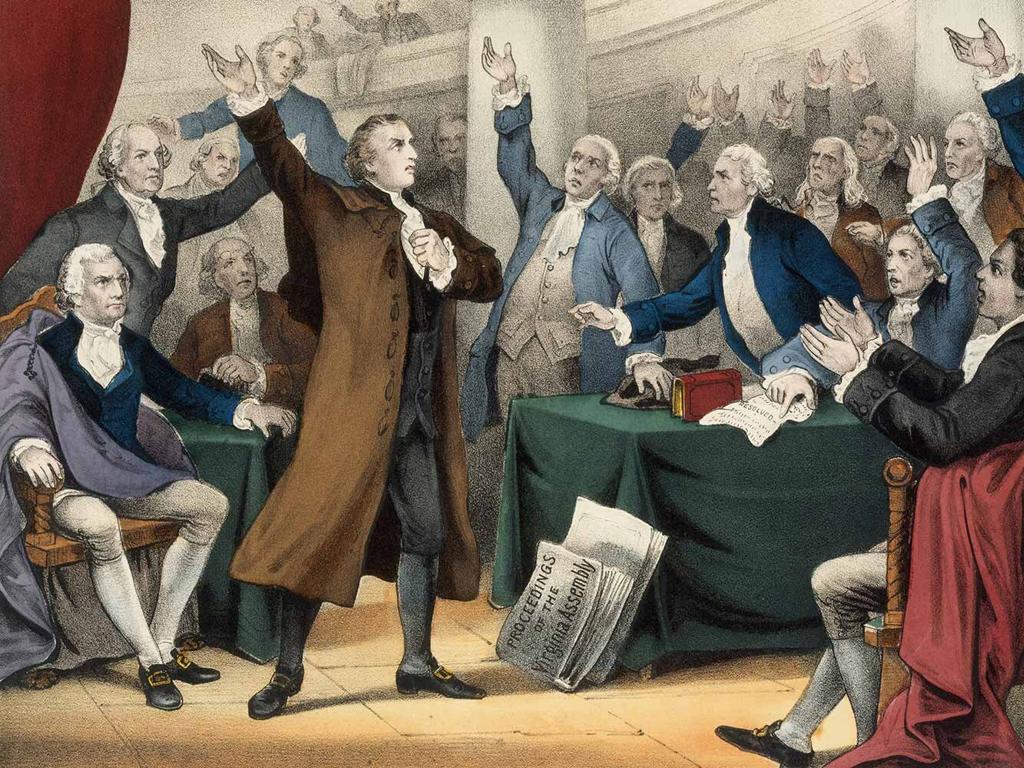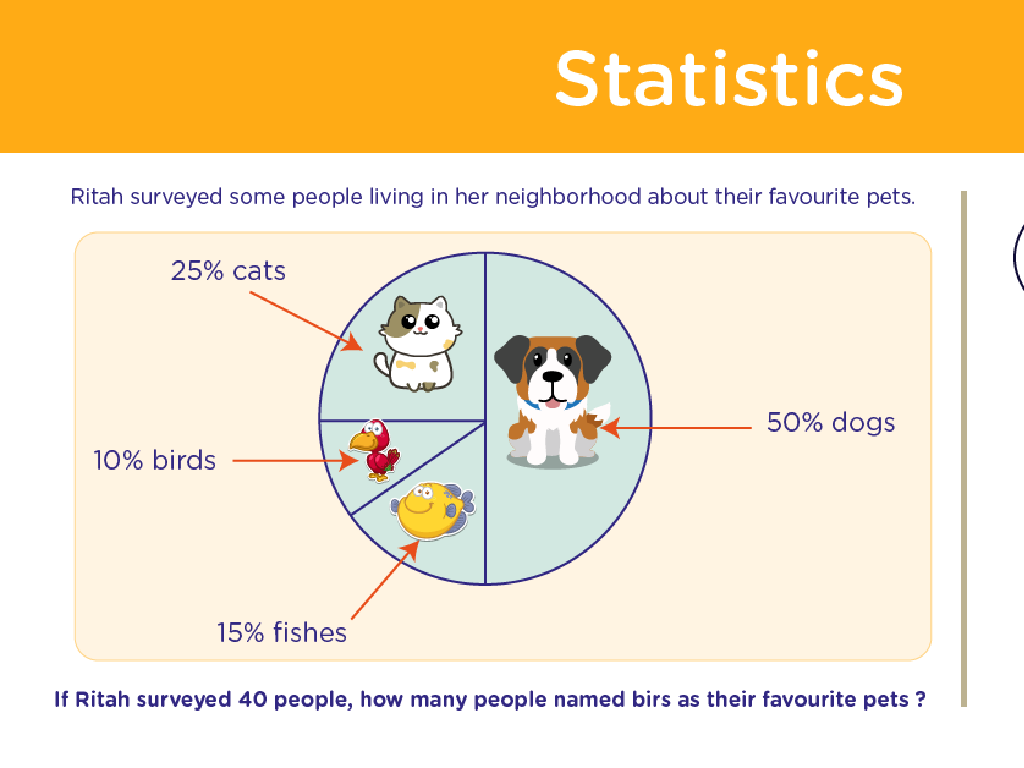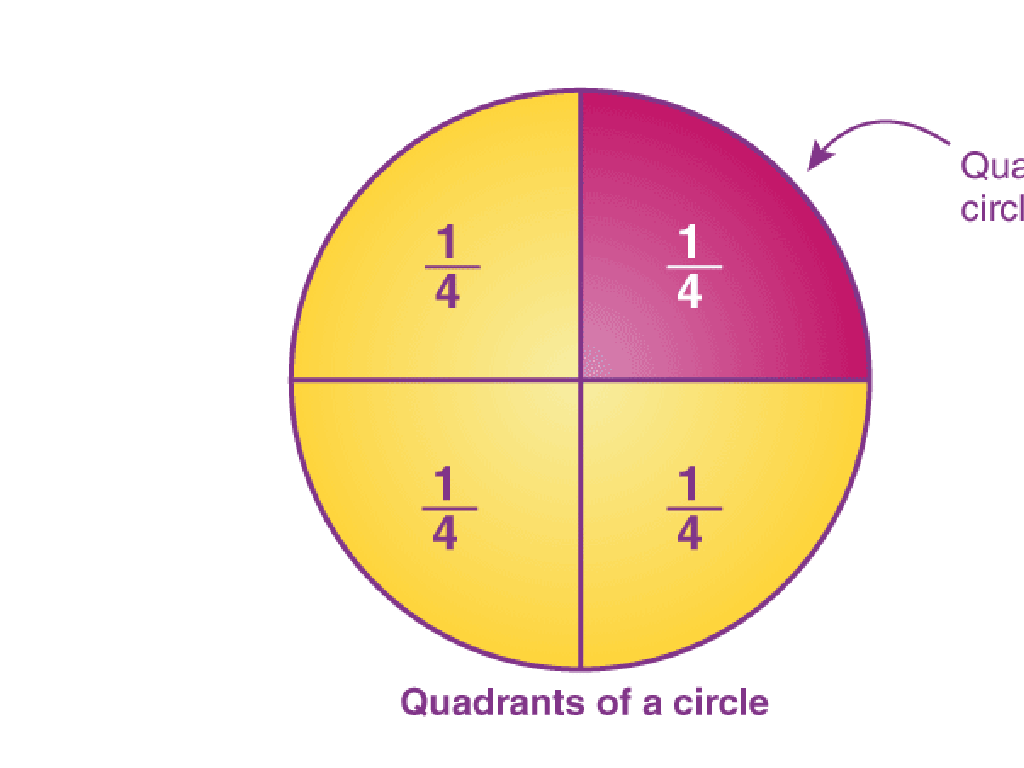Multiply Two Fractions Using Models: Fill In The Missing Factor
Subject: Math
Grade: Fifth grade
Topic: Understand Fraction Multiplication
Please LOG IN to download the presentation. Access is available to registered users only.
View More Content
Welcome to Fraction Multiplication!
– Understanding fractions
– Goal: Multiply fractions with models
– Use visual models to find the product of two fractions
– Review: What’s a fraction?
– A fraction represents a part of a whole
– Activity: Fill in the missing factor
– We’ll use models to discover the missing number in a multiplication
|
This slide introduces the concept of multiplying fractions using models, which is a visual way to understand the multiplication of fractions. Start by ensuring that students have a solid understanding of what a fraction is: a part of a whole, represented by a numerator and a denominator. The goal for today’s lesson is to multiply two fractions using models, which will help students visualize the process. Begin with a quick review of fractions to refresh their memory. Then, move on to the main activity where students will use models such as fraction circles or bars to fill in the missing factor in a multiplication equation. This hands-on activity will solidify their understanding of fraction multiplication and prepare them for more complex problems.
Visualizing Fraction Multiplication
– Fractions as parts of a whole
– Numerator and denominator roles
– Using models to multiply fractions
– Fraction bars, circles, and number lines show multiplication visually
– Practice with missing factors
– Find the missing number that completes the multiplication
|
This slide introduces students to the concept of fractions as parts of a whole and explains the roles of numerators and denominators. Visual models such as fraction bars, circles, and number lines are essential tools for helping students understand how to multiply fractions. These models can make abstract concepts more concrete. For homework, students should use these models to practice multiplying fractions and finding the missing factor in a multiplication equation. This will prepare them for more complex problems and enhance their understanding of how fractions work in multiplication.
Multiplying Fractions: Repeated Addition
– Recall whole number multiplication
– Fractions multiply like repeated addition
– Example: 1/2 multiplied by 3
– 1/2 + 1/2 + 1/2 equals 3/2 or 1 1/2
– Fill in the missing factor
– Use models to visualize missing factors
|
Begin by reminding students how multiplication with whole numbers is essentially repeated addition. For instance, 4 multiplied by 3 is the same as adding 4 three times. Similarly, when we multiply fractions, we are adding the fraction to itself a number of times. For example, multiplying 1/2 by 3 means we add 1/2 three times. This concept helps in understanding how to fill in the missing factor when one of the factors in a multiplication problem is unknown. Use fraction models, such as fraction circles or bars, to visually demonstrate this concept and help students find the missing factor by seeing the repeated addition in action.
Multiplying Fractions Using Models
– Visualize fraction multiplication
– Use area models or number lines to represent fractions
– Learn to fill missing factors
– Understand how to find a number that, when multiplied by 1/3, gives 1/6
– Solve 1/3 x ? = 1/6
– If 1/3 times a number equals 1/6, what is the number?
– Practice with different examples
– Try more problems to master the concept
|
This slide introduces the concept of multiplying fractions using visual models, which helps students grasp the abstract concept of fraction multiplication. Start by explaining how to represent fractions using area models or number lines. Then, demonstrate how to find a missing factor in a multiplication sentence by using the example provided. Encourage students to think about the relationship between the known fractions and the missing number. Provide additional examples for students to practice and solidify their understanding of the concept. Ensure that students are comfortable with the idea of finding a missing factor before moving on to more complex problems.
Multiplying Fractions: Finding the Missing Factor
– Model the first fraction visually
– Use shapes like circles or bars to represent fractions
– Divide model to discover missing factor
– If 1/2 is shaded and we need to find the factor that results in 1/4 when multiplied, divide the shape further
– Count parts for the second fraction
– After dividing, count how many parts make up the second fraction
– Complete the multiplication
|
This slide is aimed at teaching students how to multiply two fractions by filling in the missing factor using visual models. Start by representing the first fraction with a model, such as a shaded circle or bar. Then, divide the model into more equal parts to find the missing factor that, when multiplied by the first fraction, will result in the desired product. Have students count the parts to determine what the second fraction is. This visual approach helps students understand the concept of fraction multiplication by filling in the missing factor. Encourage students to practice with different fractions and models to solidify their understanding.
Let’s Practice Together: Fraction Multiplication
– Practice Example: 2/5 x ? = 4/15
– Use models to find the missing factor
– Draw a model with 5 parts, shade 2. Multiply to get 4/15, what’s the missing number?
– Share your findings with the class
– Discuss with peers how you solved the problem
– Understand the concept through discussion
– Explain your reasoning, listen to others, and learn different methods
|
This slide is designed for a collaborative class activity to reinforce the concept of multiplying fractions using models. The practice example provided will guide the students to visually understand the multiplication of fractions by filling in the missing factor. Encourage the students to draw a fraction model for 2/5 and then determine what fraction multiplied by 2/5 gives 4/15. After individual work, students will engage in a group discussion to share their methods and findings. This will help them to articulate their thought process and to learn from their peers. As a teacher, facilitate the discussion by asking guiding questions and ensure that each student understands the concept. Provide additional examples if necessary and praise their efforts to build confidence.
Class Activity: Fraction Multiplication Models
– Create fraction multiplication models
– Use fraction circles, paper, pencils
– Work in pairs on multiplication
– Solve problems together
|
This activity is designed to help students visualize the process of multiplying fractions by using fraction circles. Students will work in pairs to encourage collaboration and discussion, which can lead to a deeper understanding of the concept. Provide each pair with a set of fraction circles, paper, and pencils. They should use the circles to create models representing different multiplication problems, then draw these models on paper and write the corresponding multiplication sentence. For example, if they model 1/2 multiplied by 1/3, they should show how half of the fraction circle fits into a third three times. Encourage students to explore different combinations and to help each other if they get stuck. As a teacher, circulate the room to offer guidance and ensure that each pair is on track. Possible variations of the activity could include creating word problems to accompany the models or challenging students to find the missing factor when given the product.
Wrapping Up: Multiplying Fractions
– Review fraction multiplication
– Homework: Worksheet practice
– Complete the provided worksheet to practice multiplying fractions.
– Next class: Complex multiplication
– We’ll tackle more challenging problems involving fraction multiplication.
– Keep practicing at home!
|
As we conclude today’s lesson, ensure that students have a solid understanding of the concepts of multiplying fractions using models. The homework worksheet is designed to reinforce these concepts and provide additional practice. Encourage students to attempt all problems and seek help if needed. In the next class, we will build upon what we’ve learned and explore more complex scenarios of fraction multiplication. Remind students that practice is key to mastery, and they should continue working on problems at home to strengthen their skills.

